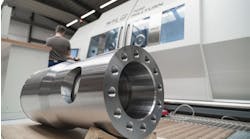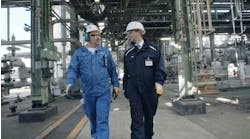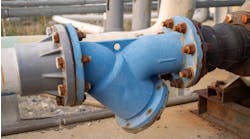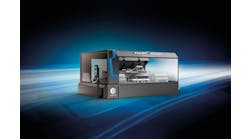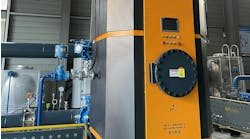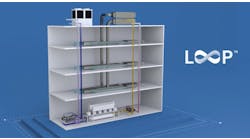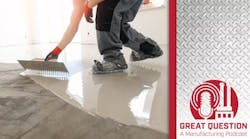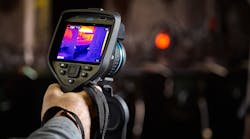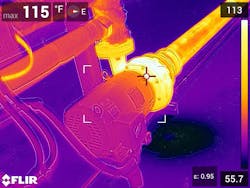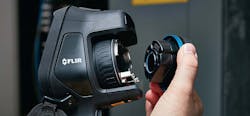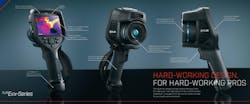In photography circles, they like to say that the best camera is the one you have with you.
In the industrial world, where thermographers depend on thermal imagers to keep plants productive and safe, this adage holds generally true. But in this environment, there remains a costly disconnect between the best camera for the job and the one users are most likely to have at their side.
It's really a problem of needs. These techs require devices that are portable and durable enough to survive difficult plant environments—and for that, there are several sub-$10,000 options that will do the job. But techs also need high-performance cameras sensitive enough to detect the slightest issues and versatile enough to adapt to the diverse requirements of a plant. That can mean looking at models that are far too expensive and delicate to lug around in a tool bag every day.
The fact is, however, these workers need all of these options. To protect plants, machines, and lives in the factory, they need imagers that can detect issues as quickly and accurately as possible. They need versatility—telephoto, wide angle, or whatever lens makes sense for the job. Most importantly, they need access to have all of this with them at all times. And, of course, they'd probably prefer not to spend $25,000 to get it if they can help it.
In the past, this has been impossible to deliver and thermographers had to settle with the disconnect. But now, FLIR Systems has come up with a new solution that finally meets all of these needs at once. Actually, three solutions.
Sporting a completely new design, the FLIR E75, E85, and E95 thermal imaging cameras are packed with new features and functions that are designed to bring high performance capabilities to portable devices—from Wi-Fi connectivity to intelligent interchangeable lenses, to nearly indestructible Dragontrail glass.
Read more about the expanded Exx-Series thermal imaging cameras on the NED Directory.
Recently, we met up with Brent Lammert, FLIR's VP Business Development, Volume Segment, to dig into what these cameras can really do and how they are positioned to disrupt the market.
NED: First off, could you explain exactly what these new cameras can do and what kind of users they were designed for?
Well, there's a wide range of users for thermal imaging cameras. But this product is focused more on the manufacturing and industrial customer. This is a user whose time is crucial and for whom plant operation safety is paramount. They need to reduce costs and they need to be able to use tools efficiently and they need to be able to share information across the organization seamlessly. So that's what we're giving them with the E75, E85, and E95.
These cameras keep all of the features like high performance, durability, and portability that we've had in our lineup for quite some time, but we've built more on those. So we have resolution that is more than double what we had in this category before. We have a user interface and LCD behind Dragontrail glass that offers a 30% larger screen and 33% greater brightness.
It also gives a very, very wide viewing angle—you can almost go all the way horizontal to that screen and still see what you need to see. When you're climbing around the facility and looking over and around and under and behind things, this is really critical.
NED: You mentioned higher resolution. How does this compare to previous models in this category?
First, the LCD itself shows four times the resolution, making everything sharper and crisper and better for the end user.
No Photoshop necessary: the new cameras' larger, brighter screens are designed to produce extremely high-resolution images so users can make better decisions faster.
Photo: FLIR Systems
NED: I've read about these intelligent interchangeable lenses. What are these exactly and how do they help manufacturers?
With this new design, we've made it very easy for them to add new lenses to their cameras without having to back to service and have it calibrated with the new lens. If you buy a camera and you decide that in addition to the original lens, you need to add a telephoto or a wide angle, you can just but it, it ships to you, and there's a quick wizard that takes you through the autocalibration setup.
After that, you're rocking and rolling. It will auto-recognize the lens, you'll have the calibrations, and you can start using to it to increase the capabilities of your camera.
And all the lenses are a brand new design that we build in-house. We actually do the grinding of the optics and all the assembly ourselves, so they are all the exact same physical dimensions for the standard, wide angle, and the telephoto. That means when you put them on the camera, they are all behind the guard rather than sticking out in front. That helps with durability and helps make them more portable in the field.
NED: Overall, how do the E75, E85, and E95 cameras compare to some of your other popular systems?
Well, with an infrared camera like the E95, compared to a product like the FLIR One or the CAT S60, it offers much, much higher durability, much, much higher temperature range, as well as much greater detail in the thermal image to be able to measure from further away.
So if you were trying to measure an electrical connection with the Cat S60, you're probably going to need to be within just a couple of inches from your target. But with the E95 and a 14-deg. lens, you could be across the room from it.
If you're looking at 110 V, you may not care too much. But if you're looking at 480 V or higher, you probably do care.
If you're in a facility where you are looking at some processes that are very hot or some connections that can get very hot, in general most of the cellphone products or mobile accessories are limited to just about 300° F. Now, most manufacturing customers need to be able to measure much higher than that and need to be able to measure much faster.
These cameras can accomplish that.
NED: Price point and ROI seems to be an important feature here. How do these cameras fit here?
Here's some context. An insurance company out of Chicago called CNA Insurance recently published the results of a five-year study on over 6,000 infrared surveys they had performed. They calculated that they had saved customers around $52 million.
When you do the math on that, that's about $8,500 saved per day for each manufacturing facility.
So when you look at the price point for these new cameras—the E75 at $7,000, the E85 at $8,500, and the E95 at $9,900—they offer a pretty fast ROI.
Basically, the ROI is not something measured in years or months or days; it's a matter of hours. Usually, it pays for itself the very first time you take it out.
